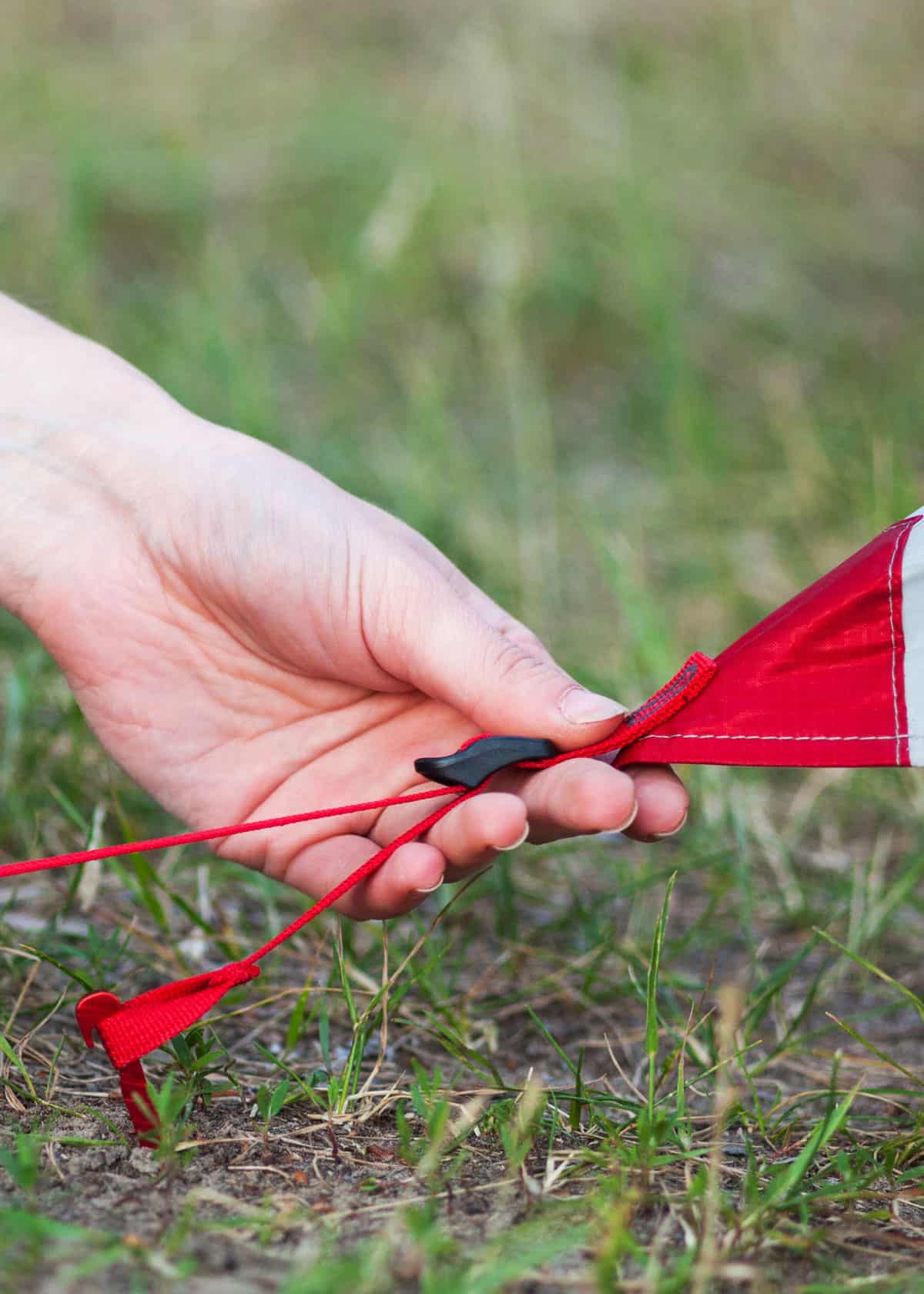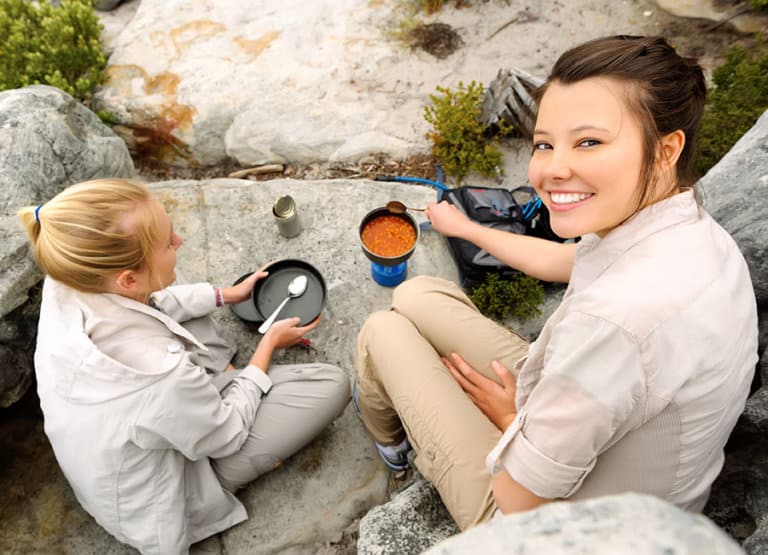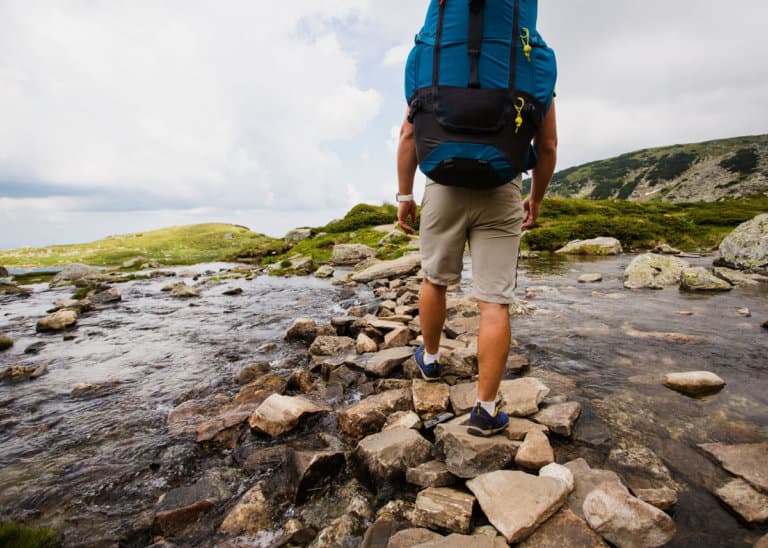How to Stake a Tent Properly: 12 Required Tips for Beginners
Poorly staked tents are one of the most common camping fails. It will take the fun out of your trip in just one windstorm. In this post, you’ll learn how to stake a tent with beginner and pro tips.

More reading: Guide to Setting Up a Tent in the Rain
How to Stake a Tent Properly
Escaping into the great outdoors overnight, for a weekend or weeks at a time, is one of life’s simple pleasures. No matter how long you go, one thing never changes… you have to put the tent up.
If you do this right, you’re a hero. If you don’t do it right, the other thing that never changes is that your loved ones will never let you live it down.
So, to ensure that never happens, this easy ‘how to’ guide is here to help you out and give you 10 quick pointers, helpful tips, and handy hints to remember – so you come out looking like a pro.
More reading: How to put a dome tent up by yourself

12 Tips to Stake a Tent Properly
1. Choose and clear the site
Once you arrive, take a minute to walk around and choose your site.
Remember you will be sleeping on that ground in a few hours. Check to see if it is rocky, level, has large tree roots, or if it’s under a tree that drops pine cones or acorns? These are some considerations to think about.
Imagine how annoying a lump in your side is in the middle of the night, or the scared yelp from the kids when falling acorns wake everyone.
It’s worth taking 2 minutes to pick up any larger rocks, twigs, seeds etc. Your future self will thank you.
2. Always stake your tent
I know this sounds ridiculous but it has been done…
First-timers, and avid campers alike have erected their tents on a calm windless afternoon then been distracted by kids or enjoyed a beverage or two and forgotten to go back and stake the tent.
Then, the wind picks up and adios amigo, they’re chasing their tent around… oops.
3. Tie guy lines
Aside from staking off the base of the tent, don’t forget to tie guylines.
This helps give the tent structure and maximize the interior space of the tent.
4. Stake corner guy lines at an angle
When stakes are placed at a 45 angle from the corner, you can pull the line taught for maximum room inside. It also helps waterproofing to stay put if the wind picks up.
When it’s taught, your tent will be roomy and comfortable inside.
Handy Hint: Always pack extra stakes in case the wind picks up.
5. Straight up stake
Yes, that’s exactly as it sounds. When you drive a stake in, it’s more effective if you hammer it straight down into the soil for maximum penetration and resistance against higher winds.
This has proven effective in severe storms with wild winds.
6. If you forget the hammer
Use a rock, tire iron, or the back of an axe head to drive your stakes in. You want a straight entry for the strongest hold.
If you are car camping, bring along a rubber mallet. This will drive your stakes without much effort and without crushing them. If you are backpacking, your hatchet will do the trick.
Tenting Tip: Don’t use your hand or foot. This applies uneven pressure to the stake and it may bend as your foot naturally wiggles with you trying to keep your balance. And it won’t give maximum hold because it will soften the soil around the stake.
7. Choose the right tent stakes
The two main factors to consider when choosing a stake are length and surface area.
Here are the three most popular type of tent pegs:
7″ Aluminum Tent Stakes: These aluminum stakes are super lightweight (12 pieces weigh just 3.5 oz.) and are very strong. The three-sided design increases surface area for a stronger hold. Great for most tenting applications, especially when weight is a factor. If you are in sandy soil, you’ll need a longer peg.
12″ Aluminum Tent Stakes (For Sand or Snow): These heavy-duty stakes have lots of surface area and a curved shape for a solid hold. Use these in soft surfaces, like sand and snow. The multiple holes increase holding power and give several rigging options, including the solid deadman anchor. These weigh a few ounces each.
11″ Galvanized Steel Stakes: These are the more traditional tent pegs. They are super heavy-duty and have a weight to match. Ten pegs weigh 3 lbs. These are not good for backpacking but might do the trick for backyard or car camping.
Handy Hint: Have different types of stakes of different lengths so you are never surprised by a change in soil type.
Trouble putting your tent away? Here’s how to fold a tent like a boss
8. If unsure, stake more
By this we mean, if you are unsure that the stakes you have are adequate for the soil type, add a few more or tie your tent to a tree.
Sandy soils need longer, deeper-wedged stakes to hold properly, so if you don’t have any on hand then a tree is your best friend.
9. What goes in easy, comes out easy
Okay feeling like Superman is awesome when you can single-handedly push a stake in with your bare hands, but just remember that it can come out just as easily.
If a storm rolls in and wets the ground, when the wind – rises chances are your tent will rise right along with it.
10. Hooks are helpful
You know that small hook at the end of your tent’s stake? Well, it is there for a reason. It is there to add the most amount of tension to your guy rope through the resistance of the soil.
When the hook faces away from your tent, it is reinforced by the soil. Think of it as a backup anchor. If it is facing toward the tent then it also increases the chances of your rope slipping off.
Another great piece of gear to bring when setting up your tent is a s-biner carabiner. These are usually lockable, double-sided carabiners, which are great for connecting the loop on the stake to the guy line on your tent.
These carabiners are also great for stringing your tarp above your fire and tent.
11. Ropes down to stakes are trip hazards
Common sense, sure. But in the middle of the night when you or your loved ones have to tinkle, chances are you may just forget where the rope goes down to meet the stake and trip over it.
This is another good reason to stake at a 45 angle away from the entrance to your tent.
12. Makeshift supplementary stakes
You can fasten makeshift stakes as additional anchors by tying a rope from your tent to a rock on the ground. Then, by laying a large rock on top to help reinforce and keep it in place.
This is ideal if a storm blows up out of nowhere and you need additional stakes you just don’t have on hand, or they are too far away to hike back and grab before the storm hits.
Or you can make your own wooden stakes.
Here’s how to make pegs with a machete:

Your Turn
Do you have a camping fail to share? Or maybe a question about setting up your tent? Join us in the comments!









